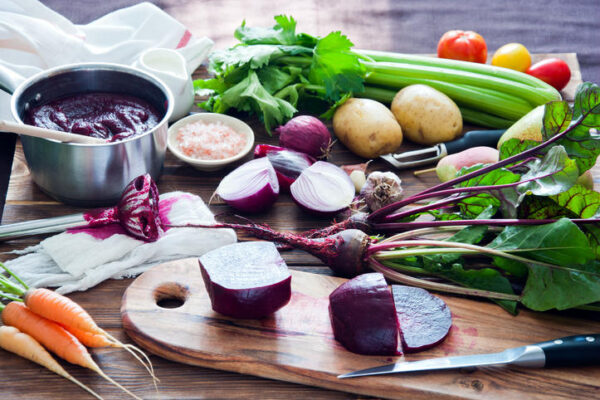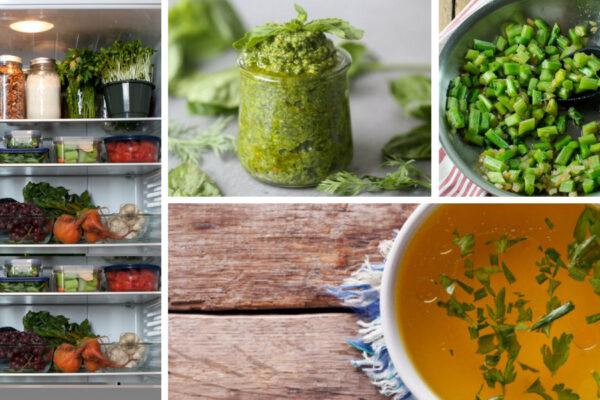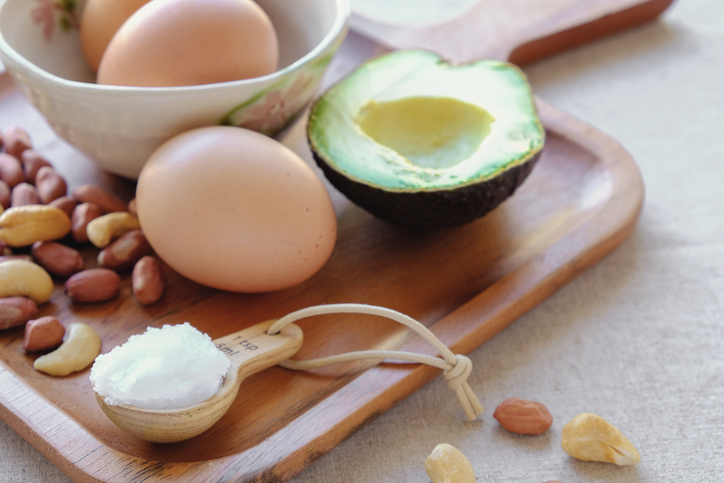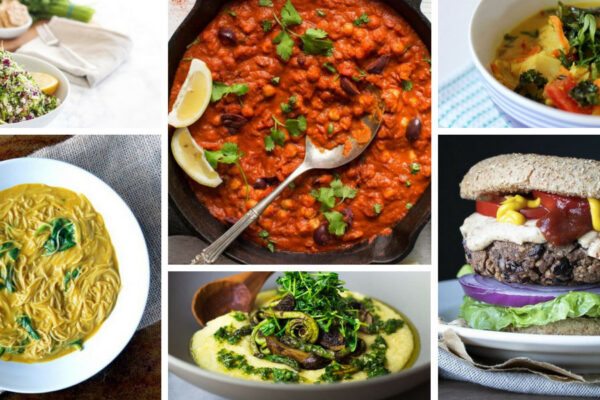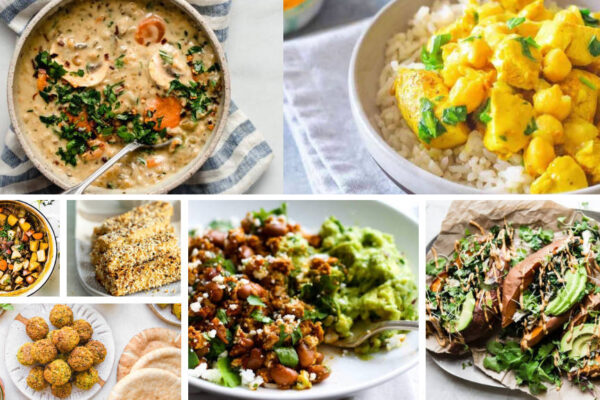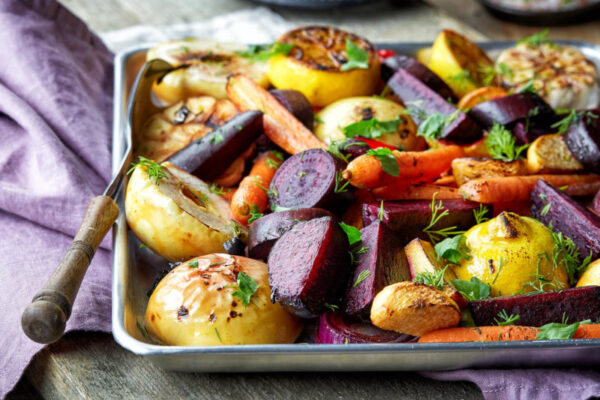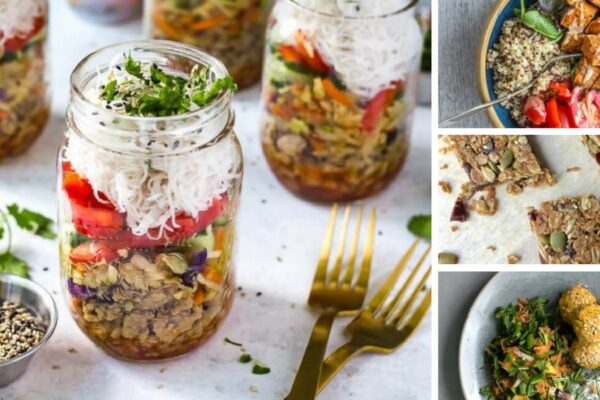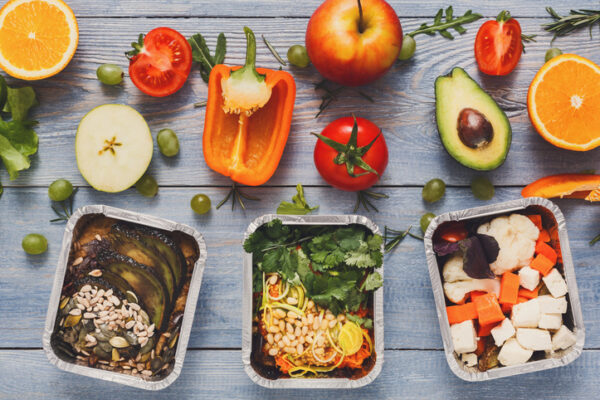How to Eat More Vegetables
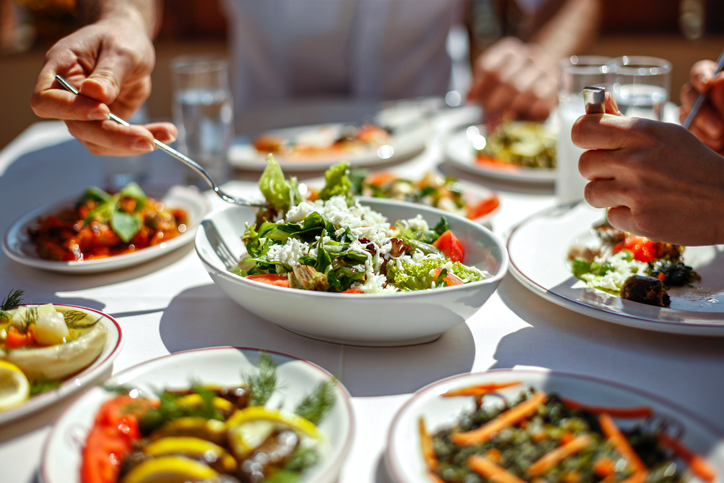
Whether you’re vegan, paleo or omnivorous, the key tenet of these types of diets is eating more vegetables. But that’s easier said than done, especially if your broccoli and Brussels sprouts tend to languish in the crisper. How can you get more veggies in your diet without being overwhelmed by cooking? With these simple steps, you can learn how to eat more vegetables and enjoy them thoroughly!
1. Make a Menu Plan
Building a nutritious menu plan that includes lots of vegetables is the first step towards actually eating more vegetables! Pick a few vegetables to focus on each week and centre your recipes around them, changing up the spices, the proteins, and other flavours to keep it fresh and interesting. You can also re-vitalize leftovers by tossing them in a fresh salad, pairing them with roasted veggies or using them in a recipe-free dinner bowl. Menu planning and meal prep are a couple of the first skills we teach our culinary nutrition experts as they are incredibly essential to keeping your healthy eating goals on track, and to help you eat more vegetables.
Some recipe inspiration for your menu planning:
- 25 Best 30-Minute Meals
- 20 Best One-Pot Meals
- 20 Best Savory Breakfast Recipes
- 12 Vegan Breakfasts (that aren’t cereal or toast)
- 12 Family-Friendly Recipes
- 20 Best Gluten-Free, Kid-Friendly Snacks
- 25 Nut-Free Lunch Ideas
- Top 20 Budget-Friendly Recipes
- 20 Best Gluten-Free Pizza Recipes
….and you can find LOADS more ideas here.
2. Meal Prep
It’s much more difficult to consume vegetables if they’re not ready to eat or cook with. Sometimes it seems like too much effort to de-seed a butternut squash or a whole pumpkin, especially when you are hungry and just want to get dinner on the table fast. These 5 Essential Meal Prep Tips and this Healthy Batch Cooking 101 guide are great resources to help you get started. Prepping ingredients gets you one step closer to eating them, which not only will fuel you but also help you reduce food waste.
3. Get Blending (or Juicing)
Don’t fall into a banana + berries rut for your morning smoothie! Many vegetables go great in the blender, such as zucchini, sprouts, dark leafy greens and celery. Juicing is also a great way to unlock veggie power when it’s too hot to cook. These 20 Best Smoothie Recipes will help get you started, or consult our 9 Tips for Smoothie Bowls or our Smoothie Blending Guide.
4. Try A Veggie Box or Community Supported Agriculture (CSA)
If you tend to wander the produce section unsure of what to buy, consider signing up for a CSA bin or organic vegetable delivery service. This way, you’ll receive a new box of produce regularly, most likely containing some veggies you may not have heard of or used before (Jerusalem artichoke, anyone?). That means less time making decisions at the grocery store and more time spent eating up that delicious produce!
These tips about how to choose a CSA may come in handy!
5. Keep Veggies Within Snacking Distance
Got a million carrots and don’t feel like cooking? Chop them up, put them in front of friends or family members while they’re watching a movie and watch them disappear – especially if you pair them with some yummy hummus.
6. Swap Breads and Noodles for Veg
Use collard greens or chard leaves to create veggie wraps (more bread alternatives here) or try spiralizing zucchini, carrots, sweet potatoes, or winter squash for veggie ‘noodles’; spaghetti squash also has natural noodle-like strands when cooked. Another option is to try cauliflower rice instead of grains.
7. Make a Filling Salad
Load up your salad bowl with vegetables, but create more staying power with avocado, nuts and seeds, beans and legumes, and an awesome salad dressing using nutritious oils.
8. Wilt Your Greens
Dark leafy greens are amazingly nutritious, but they sure are voluminous! That massive bunch of raw spinach may have you feeling a little overwhelmed, but wilting it gently on low heat with some ghee or olive oil will shrink it down to a manageable quantity. You can also toss them into stews, soups or other one-pot meals at the end to gently wilt them and add more nutrition to your meals.
9. Pickle Them
Take some inspiration from yesteryear and pickle up that goodness for later enjoyment. Fermented foods are rich in probiotics and bioavailable nutrients, and are totally delicious. If you’ve never made pickles before, don’t worry – we’ve got a guide to pickling right here.
10. Sneak Veggies Into Baked Goods
Vegetable purées or shredded vegetables add texture, flavour and nutrition to gluten-free baked goods. Certain purées made from carrots, parsnips, sweet potatoes and squash are sweeter, so you may be able to cut down on natural sweeteners elsewhere in the recipe. Try zucchini bread or carrot bread to incorporate shredded veggies, or go savory with these butternut squash and lentil muffins.
11. Make Veggie Burgers
As with baking, you can pack a lot of veggie goodness into vegetable burgers and really make them hearty by adding cooked gluten-free grains, beans, nuts and seeds. Take a look at these 20 Best Burger Recipes for inspiration.
12. Eat Seasonally
Vegetables are going to taste better when they’re in season (asparagus just isn’t going to taste that great in December). Look for vegetables that are grown locally, as they’ll travel shorter distances from the farm to your plate, which will increase their flavour and make them last longer in your fridge.
13. Grow Your Own
You are probably likely to eat more vegetables when you’ve spent the time and effort lovingly attending to them! Having a backyard is nice, but you don’t need one to grown your own food. Certain vegetables like microgreens, herbs, lettuce and mushrooms can be grown indoors. Make the space you have, whether it’s a balcony or a countertop, work for you.
14. When All Else Fails, Make Soup!
Nothing hits the spot (and uses up vegetables) like a big pot of veggie soup. If you’ve got a ton of vegetables in your fridge, making a big pot of soup is a fantastic way to use them all up at once. Invent your own soup recipe using carrots, onions and celery as a base, adding beans or lentils for protein and tossing in whatever other veggies are hanging out in your crisper. Or try one of these soup recipes:
- 20 Best Dairy-Free Soup Recipes
- Parsnip Cumin Soup
- Roasted Squash + Cauliflower Soup
- Creamy Cauliflower Carrot Soup
- Cashew Carrot Ginger Soup
- Pesto Soup
- Thai Noodle Bowl Soup
- Creamy Pumpkin Gluten-Free Noodles
Once you begin to learn how to eat more vegetables, prepping and cooking with them will become second nature. And with so many vegetables to choose from, you won’t get bored!
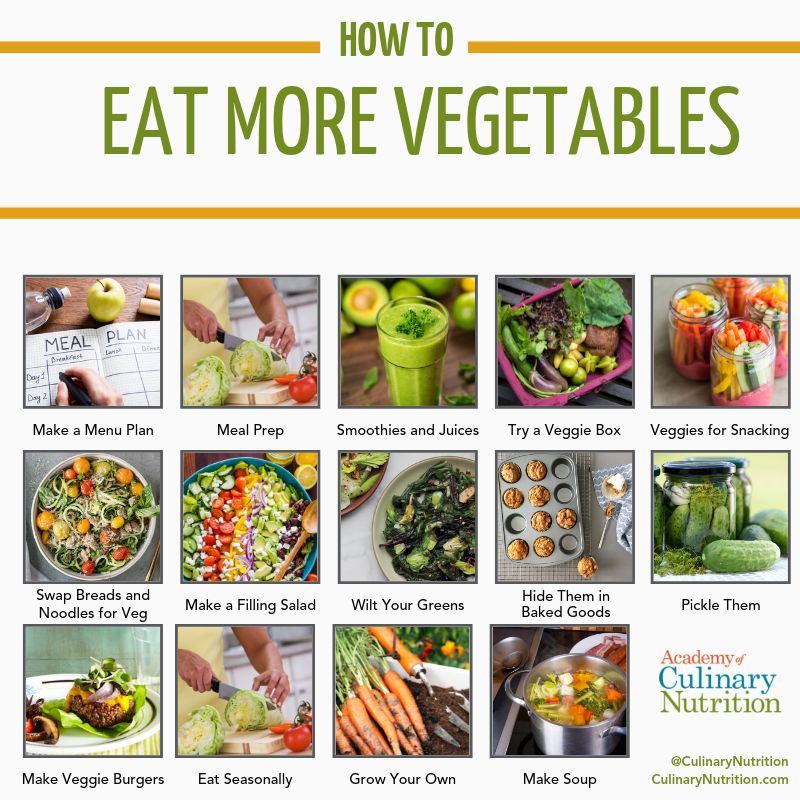
Free Resource Library
Enjoy more than 40 downloadable guides, recipes, and resources.















